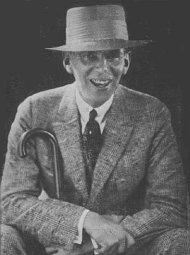philogyny
n. love of women
mulierose
adj. fond of women
threpterophilia
n. love of female nurses
philogyny
n. love of women
mulierose
adj. fond of women
threpterophilia
n. love of female nurses

A husband and wife are killed in an accident and find themselves in heaven. It’s an immaculate golf course with a beautiful clubhouse and handsomely landscaped greens, and they have it to themselves. They gape at it for a while, and then he asks her if she’d like to play a round.
As they’re teeing up for the first hole, she says, “What’s wrong?”
He says, “We could have been here years ago if it weren’t for your stupid oat bran.”
The same Dr. Webb was on one occasion counsel for Peter Mulligan, who made an application before the Recorder of Dublin for a license for a public-house. The applicant was only twenty-five years of age, and the police objected on account of his youth.
‘He is very young for so responsible a position,’ quoth the Recorder.
Dr. Webb instantly rose to the occasion:
‘My lord,’ he said, ‘Alexander the Great at twenty-two years of age had–had crushed the Illyrians and razed the city of Thebes to the ground, had crossed the Hellespont at the head of his army, had conquered Darius with a force of a million in the defiles of Issus and brought the great Persian Empire under his sway. At twenty-three René Descartes evolved a new system of philosophy. At twenty-four Pitt was Prime Minister of the British Empire, on whose dominions the sun never sets. At twenty-four Napoleon overthrew the enemies of the Republic with a whiff of grape-shot in the streets of Paris, and is it now to be judicially decided that at twenty-five my client, Peter Mulligan, is too young to manage a public-house in Capel Street?’
The license was hurriedly granted.
— Matthias M’Donnell Bodkin, Recollections of an Irish Judge, 1915
Bonus poser: In what sport does only the winning team travel backward?

In 1907, Wilson Mizner ran a theatrical hotel in New York.
He posted two rules:
“Carry Out Your Own Dead”
“No Opium Smoking in the Elevator”
“Be nice to people on the way up,” he once said, “because you’ll meet them on the way down.”
In February 1820, Connecticut sealer John Davis sailed south past Hoseason Island in the Southern Ocean and spied a peninsula there. He wrote in his log:
Commences with open Cloudy Weather and Light winds a standing for a Large Body of Land in that Direction SE at 10 A.M. close in with it our Boat and Sent her on Shore to look for Seal at 11 A.M. the Boat returned but found no sign of Seal at noon our Latitude was 64°01’ South. Stood up a Large Bay, the Land high and covered intirely with snow. … I think this Southern Land to be a Continent.
He is believed to be the first man to set foot on Antarctica.
You say you know your brother.
Yet when your brother is hooded you are unable to identify him.
Therefore you both do and do not know your brother.
— Eubulides

Picasso said of his portrait of Gertrude Stein, “Everybody thinks that the portrait is not like her, but never mind, in the end she will look like the portrait.”
An old epigram runs: “It sounds like paradox — and yet ’tis true, You’re like your picture, though it’s not like you.”
The celebrated Foulises, of Glasgow, attempted to publish a work which should be a perfect specimen of typographical accuracy. Every precaution was taken to secure the desired result. Six experienced proof-readers were employed, who devoted hours to the reading of each page; and after it was thought to be perfect, it was posted up in the hall of the university, with notification that a reward of fifty pounds would be paid to any person who could discover an error. Each page was suffered to remain two weeks in the place where it had been posted, before the work was printed, and the printers thought that they had attained the object for which they had been striving. When the work was issued, it was discovered that several errors had been committed, one of which was in the first line of the first page.
— William Keddie, Cyclopædia of Literary and Scientific Anecdote, 1854
In October 1845, the owner of a Boston brothel awoke to find that one of his prostitutes, Maria Bickford, had been nearly decapitated with a razor. Bickford’s companion, Albert Tirrell, was nowhere to be found but had been seen recently on the premises, and his cane and bits of his clothing were found near the body.
Tirrell was discovered in New Orleans and brought back for trial. His lawyer argued that Bickford might have been killed by her own hand or by a third party — or that Tirrell might have done it while sleepwalking. The defendant had a noted history of walking in his sleep, one that was confirmed by doctors. As recently as September, a cousin testified, Tirrell had pulled him out of bed and brandished a knife. “Somnambulism explain[s] … the killing without a motive,” the lawyer argued. “Premeditated murder does not.”
After less than two hours’ deliberation, the jury declared Tirrell not guilty — the first successful such murder defense in American legal history.